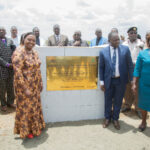Over two millennia ago, inspired by a sincere wish for friendship, our ancestors travelled across grasslands and deserts to create a land Silk Road connecting Asia, Europe and Africa, leading the world into an era of extensive cultural exchanges. More than 1,000 years ago, our ancestors set sail and braved the waves to open a maritime Silk Road linking the East and the West, beginning a new phase of closer communication among peoples.
In March 2013, Chinese President Xi Jinping proposed the vision of a global community of shared future. He raised the initiatives of joining with others to build a Silk Road Economic Belt and a 21st Century Maritime Silk Road (Belt and Road Initiative, or BRI). The BRI is a creative development that takes on and carries forward the spirit of the ancient silk routes – two of the great achievements in human history and civilization. It enriches the ancient spirit with the zeitgeist and culture of the new era, and provides a platform for building a global community of shared future.
Since its launch 10 years ago, cooperation under the BRI framework has expanded beyond the borders of China to become an international effort. It has evolved from ideas into actions, from a vision into reality, and from a general framework into concrete projects. It has been welcomed by the international community both as a public good and a cooperation platform, and has achieved solid results.
Over the past decade, BRI cooperation has delivered real gains to participating countries. It has contributed to the sound development of economic globalisation and helped to resolve global development challenges and improve the global governance system. It has also opened up a new path for all humanity to realise modernisation, and ensured that the efforts of building a global community of shared future are delivering real results.
According to a white paper released on October 10 by China’s State Council Information Office titled, “The Belt and Road Initiative: A Key Pillar of the Global Community of Shared Future,”, the Belt and Road Initiative (BRI) is not only a conceptual framework but also a realistic path for all nations to achieve shared development and prosperity.
The white paper expounds on the principles, concepts, objectives and visions of the initiative. The BRI is founded on the principles of extensive consultation, joint contribution, and shared benefits. The initiative emphasizes that all countries are equal participants, contributors and beneficiaries, and encourages economic integration, interconnected development, and the sharing of achievements.
The BRI is committed to open, green and clean cooperation toward inclusive and sustainable development. It has zero tolerance for corruption and promotes steady and high-quality growth. The document says that the BRI is a public road open to all, not a private path owned by a single party. The initiative embraces the global trend of green and low-carbon development, and clean governance is considered an intrinsic and necessary condition for its steady and sustained development.
The initiative seeks to raise cooperation standards, investment effectiveness, supplier quality, and development resilience while delivering real and substantive results for all partners. The BRI takes a people-centered approach, with a focus on poverty eradication, job creation, and improvement of people’s well-being to ensure that the benefits of cooperation reach all individuals.
Aiming to deepen understanding and trust, strengthen comprehensive exchanges, and ultimately achieve common development and shared prosperity, the BRI is a path to peace, prosperity, openness, innovation and social progress.
The economic globalization dominated by a few countries has not contributed to the common development that delivers benefits to all. Instead, it has widened the wealth gap between rich and poor, between developed and developing countries, and within developed countries. Many developing countries have benefited little from economic globalization and even lost their capacity for independent development, making it hard for them to access the track of modernization.
Certain countries have practiced unilateralism, protectionism and hegemony, hampering economic globalization and threatening a global economic recession. It is imperative to address such global problems as sluggish economic growth, shortcomings in economic governance, and imbalanced economic development. It is no longer acceptable that only a few countries dominate world economic development, control economic rules, and enjoy development fruits.
China has been a firm advocate and defender of economic globalization. The BRI dovetails with the UN 2030 Agenda for Sustainable Development in concept, measures and goals. A major step taken by China, the BRI aims to promote higher-quality development through higher-standard opening up, and share China’s development opportunities with the rest of the world. The BRI is also a Chinese solution to global development issues, which aims to advance modernization in participating countries in tandem, make economic globalization more dynamic, inclusive and sustainable, and ensure that more of the fruits will be shared more equitably by people across the world.
China has not only benefited from economic globalization but also contributed to it. As an active participant in economic globalization, China has achieved rapid economic growth through positive interactions with the rest of the world and explored a unique path towards modernization, expanding the options for other developing countries to achieve modernization. China’s rapid economic growth and steady progress in reform and opening up has provided a strong driving force for global economic stability and growth as well as an open world economy.





